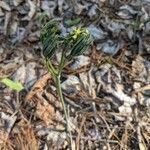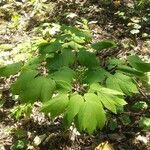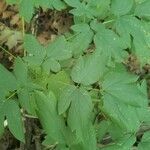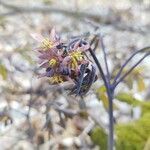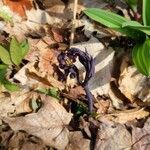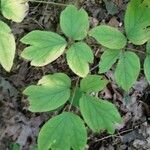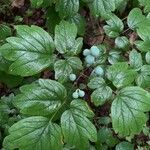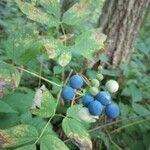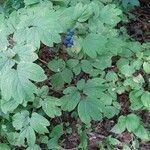Stems 2-9 dm. Leaves: 1st leaf (3-)4-ternate; 2d leaf (2-)3-ternate; leaflets 3-8 × 2-10 cm. Inflorescences with 5-70 flowers. Flowers: bracteoles 1-3 mm; sepals yellow, purple, green, 3-6 2-3 mm, apically revolute; petals 1-2.5 mm; stamen filaments 0.5-1.5 mm; pistil 1-3 mm; style 0.25-1 mm. 2 n = 16.
A herb. It grows 30-75 cm high. It has a matted rootstock with underground stems or rhizomes. It can spread widely. The leaves are compound. The flowers are star shaped and green to purple. They are 1 cm across. The fruit are deep blue berries.
